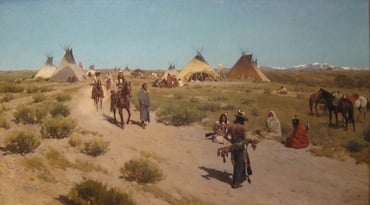Arcana Coelestia # 9488
9488. 'And a cubit and a half its breadth' means what is complete so far as truth is concerned. This is clear from the meaning of 'one and a half' as what is complete, the reason why this number means what is complete being that 'three' has this meaning (for the half of a number is similar in meaning to the whole number, because a number that results from multiplication keeps the same meaning as a simple number of which it is the product through multiplication, 5291, 5335. Regarding 'three', that it means what is complete, see 2788, 7715, 9198; and that all numbers in the Word mean spiritual realities, 482, 487, 575, 647, 648, 755, 813, 1963, 1988, 2075, 2252, 3252, 4264, 4495, 4670, 5265, 5291, 5335, 5708, 6175, 7973); and from the meaning of 'breadth' as truth, dealt with immediately above in 9487.
Dwell

To “dwell” somewhere, then, is significant – it’s much more than just visiting – but is less permanent than living there. And indeed, to dwell somewhere in the Bible represents entering that spiritual state and engaging it, but not necessary permanently. A “dwelling,” meanwhile, represents the various loves that inspire the person who inhabits it, from the most evil – “those dwelling in the shadow of death” in Isaiah 9, for example – to the exalted state of the tabernacle itself, which was built as a dwelling-place for the Lord and represents heaven in all its details. Many people were nomadic in Biblical times, especially the times of the Old Testament, and lived in tents that could be struck, moved and raised quickly. Others, of course, lived in houses, generally made of stone and wood and quite permanent. In between the two were larger, more elaborate tent-style structures called tabernacles or dwellings; the tabernacle Moses built for the Ark of the Covenant is on this model.






